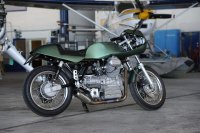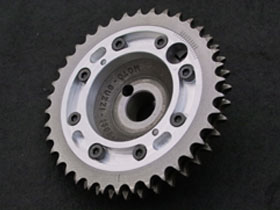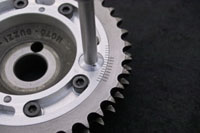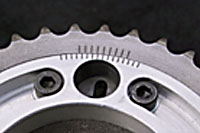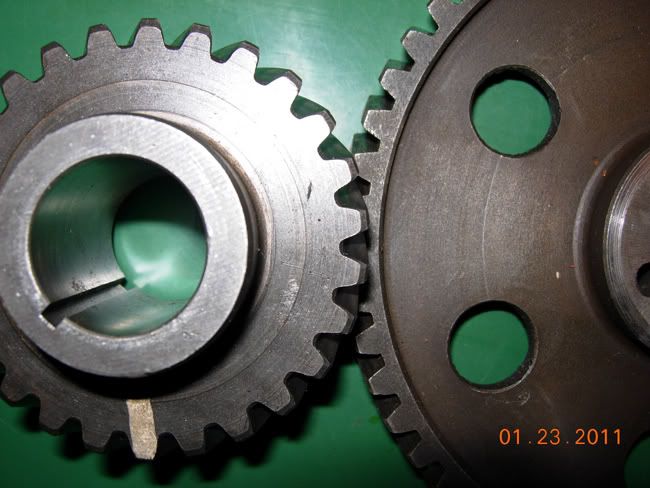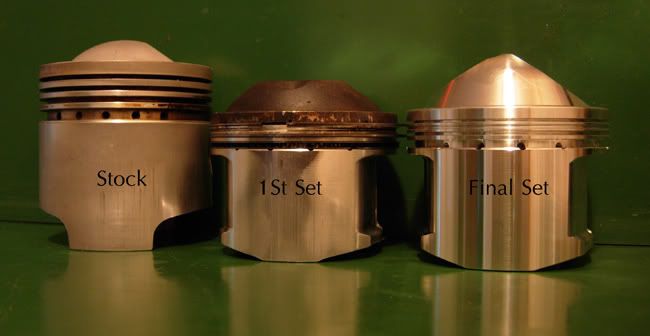geodoc
Cruisin' Guzzisti
- Joined
- Oct 27, 2008
- Messages
- 205
My Green Guzzi project bike got a dyno run a few months ago (jetting & ignition advance curve tweaks). The torque curve from that confirmed what I'd felt by the seat o' the pants - torque dip from 3500 to 5500RPM. The bike has a home brewed 2 into 1 exhaust:
This winter I decided to try adding a cross-over pipe, just below the alternator cover. This seemed to help (seat of the pants again). A trip to the dyno will tell the tale. thinking to about further exhaust massage for a (hopeful) even flatter curve by employing "anti-reversion" collars in the exhaust. These are installed in the exhaust pipes right next to the heads:


I made these with the advice of someone who has used a similar design on a Triumph Trident with noticeable effect (much better throttle response a the low end of the power band). The ID of these ones is the same as the exhaust port at the upstream end and diverges slightly towards the outlet, or downstream end.
Here's an interesting discussion about them on a XS-650 forum:
http://xs650temp.proboards.com/index.cg ... hread=8722
I'm wondering is anyone on the board has fooled with anti-reversion devices before and if so - what effect did the have? - what dimensions did you use relative to exhaust port and pipe ID? - what sort of exhaust system did you use them on?
Thanks,
GD
This winter I decided to try adding a cross-over pipe, just below the alternator cover. This seemed to help (seat of the pants again). A trip to the dyno will tell the tale. thinking to about further exhaust massage for a (hopeful) even flatter curve by employing "anti-reversion" collars in the exhaust. These are installed in the exhaust pipes right next to the heads:


I made these with the advice of someone who has used a similar design on a Triumph Trident with noticeable effect (much better throttle response a the low end of the power band). The ID of these ones is the same as the exhaust port at the upstream end and diverges slightly towards the outlet, or downstream end.
Here's an interesting discussion about them on a XS-650 forum:
http://xs650temp.proboards.com/index.cg ... hread=8722
I'm wondering is anyone on the board has fooled with anti-reversion devices before and if so - what effect did the have? - what dimensions did you use relative to exhaust port and pipe ID? - what sort of exhaust system did you use them on?
Thanks,
GD

